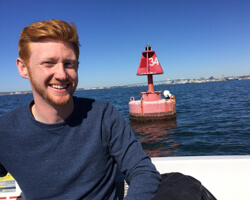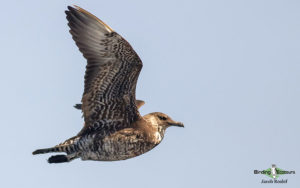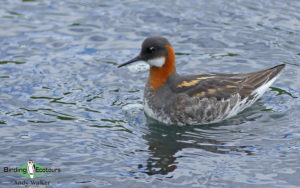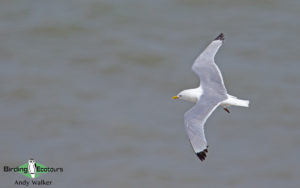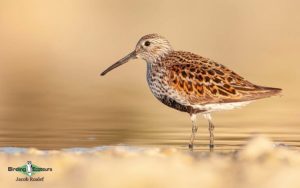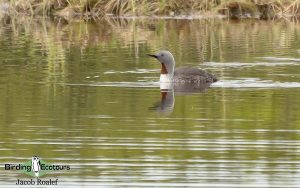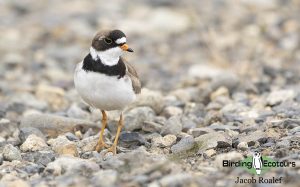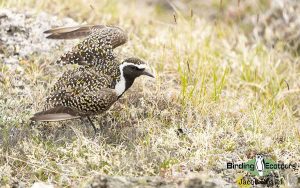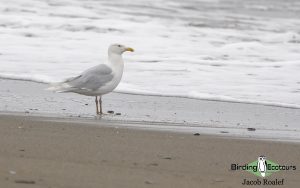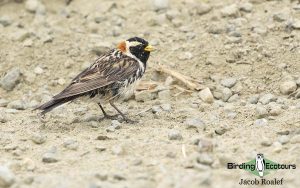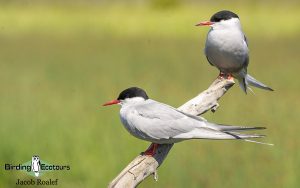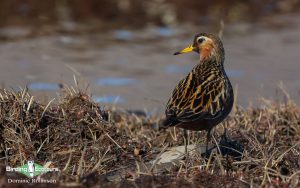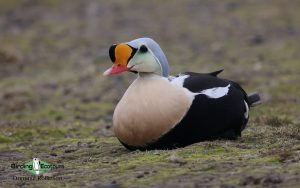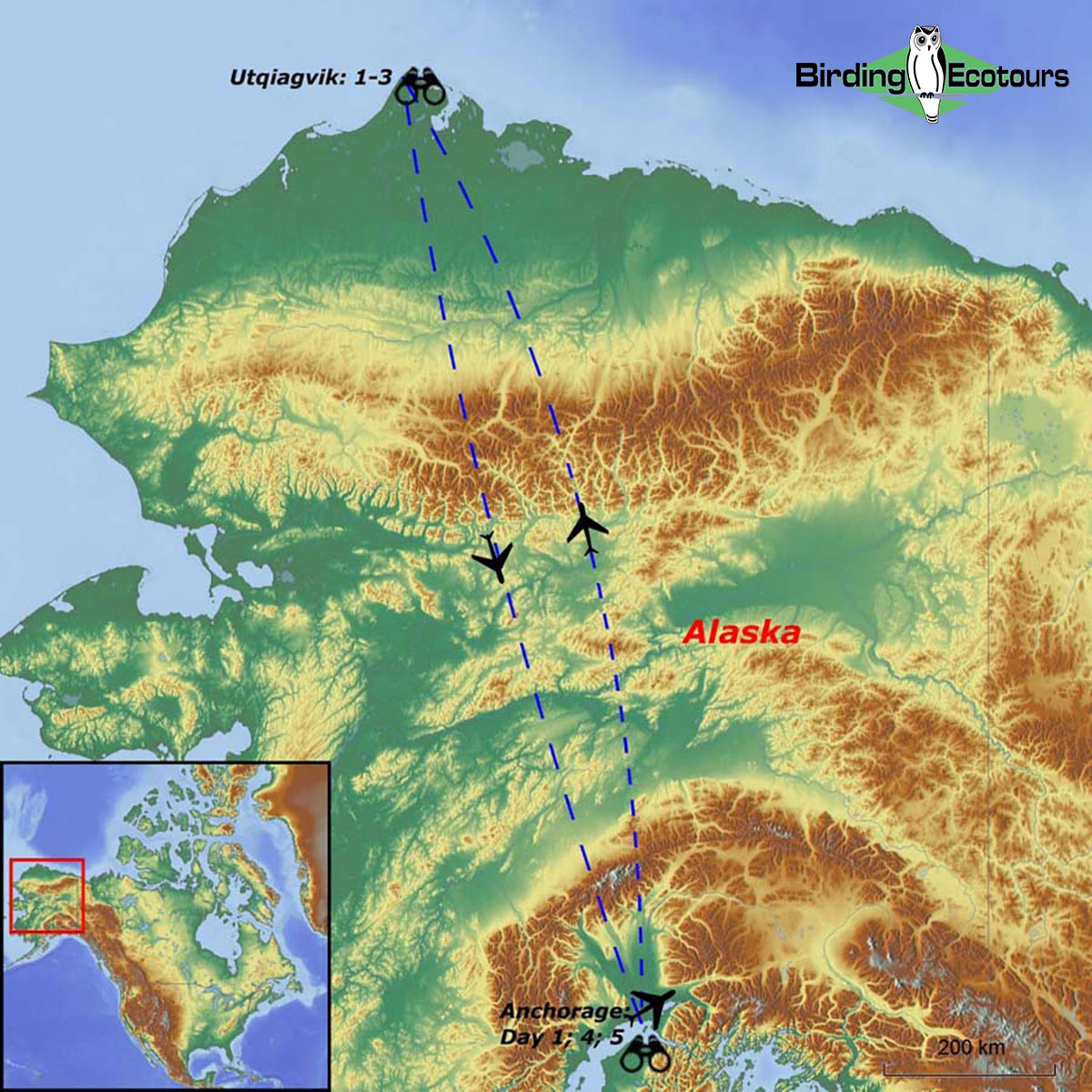Birding Tour USA: Alaska – Utqiagvik (Barrow), Top of the World
Go to: Alaska: Main Birding Tour | USA Birding Tours | North America Birding Tours | All our birding tours
Alaska: Utqiagvik (Barrow) – Top of the World
June 2026
Utqiagvik (formerly Barrow), Alaska, is the northernmost city in the United States, located over 300 miles (480 kilometers) into the Arctic Circle. In the summer the sun never fully sets as the area experiences 24-hour daylight, an amazing phenomenon to see firsthand. Several species utilize this high-Arctic habitat for breeding, such as Steller’s, Spectacled, and King Eiders, Long-tailed Duck, Tundra Swan, and numerous shorebirds.
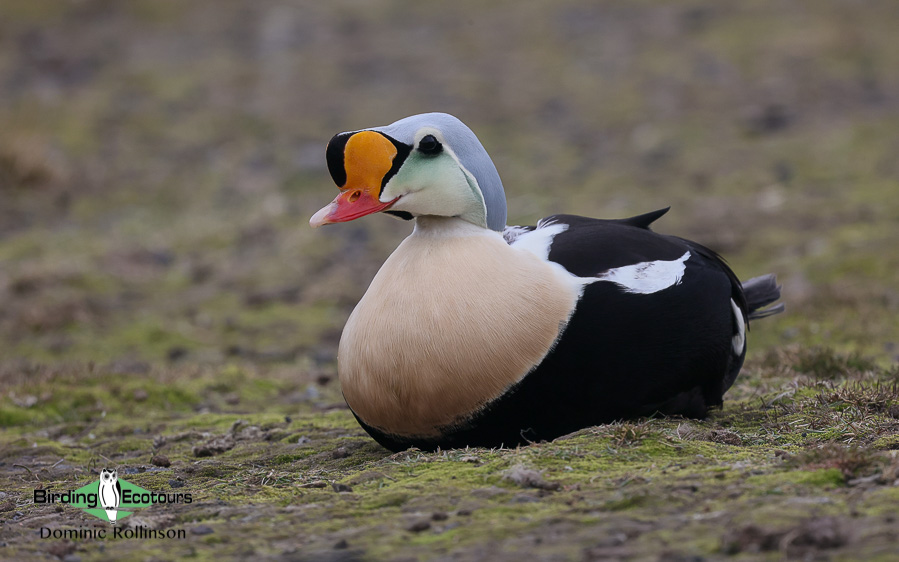
This trip can be combined with our main tour Alaska: Vast Beauty, which immediately precedes it and covers many other amazing areas of Alaska.
Itinerary (5 days/4 nights)
Day 1. Arrival in Utqiagvik
This extension trip will start in Anchorage at the tail end of our main Alaska tour as we take an afternoon flight to Utqiagvik (formerly known as Barrow). Once we arrive we will get settled in for the evening with potential for some birding, depending on time and conditions.
Overnight: Utqiagvik
Days 2 – 3. Birding the Top of the World
We will have the next two days to fully experience the culture and birding of Utqiagvik. With a large percentage of the population being Iñupiat, an indigenous Inuit ethnic group, there are many cultural aspects that give us a small insight into the life in the high Arctic. We will be birding around town, where the ice thaw can create nice ponds and lakes while also changing the habitat drastically day-to-day. These areas are famous for their small nesting populations of Steller’s, Spectacled, and King Eiders as well as other waterfowl, such as Tundra Swan, Brant Goose, and Long-tailed Duck. Some of these thaws will also create shallower waters that are utilized by numerous shorebirds like Red and Red-necked Phalaropes, Pectoral Sandpiper, Semipalmated Sandpiper, and Dunlin. We will also spend some time birding Point Barrow, where Pomarine Jaegers are staples, with Glaucous Gulls hanging around, and we may even have a shot at a drifting Yellow-billed Loon. The combination of great birding, cultural experience, and the never-setting sun make Utqiagvik a memorable experience.
Overnight: Utqiagvik
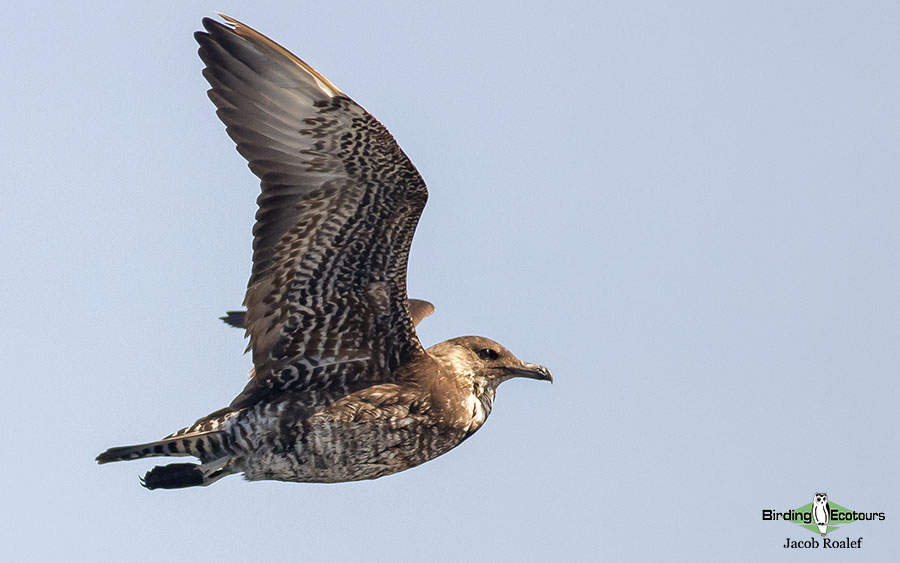
Day 4. Back to Anchorage
We’ll spend the morning birding around town again for our final looks at several species before catching an afternoon flight back to Anchorage. Once we arrive we will shuttle to a hotel for the evening.
Overnight: Anchorage
Day 5. Departure – tour concludes
This morning we will use the hotel shuttle services to take us to the Anchorage airport to catch our various flights home. This concludes the extension tour to the unique area of Utqiagvik.
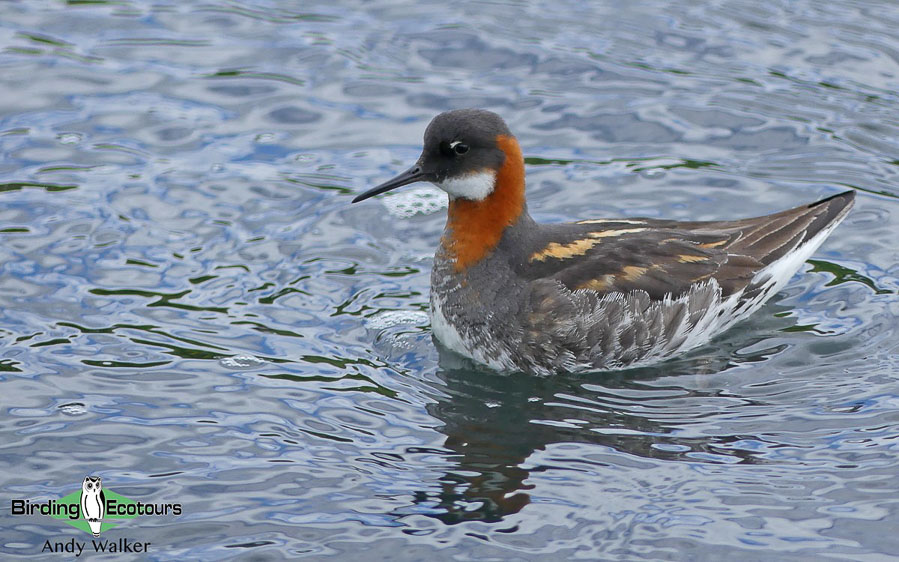
Please note that the itinerary cannot be guaranteed as it is only a rough guide and can be changed (usually slightly) due to factors such as availability of accommodation, updated information on the state of accommodation, roads, or birding sites, the discretion of the guides and other factors. In addition, we sometimes have to use a different international guide from the one advertised due to tour scheduling.
Download ItineraryUSA – Alaska: Utqiagvik (Barrow) Extension Trip Report, June 2024
24 – 28 JUNE 2024
By Jacob Roalef
DOWNLOAD TRIP REPORT
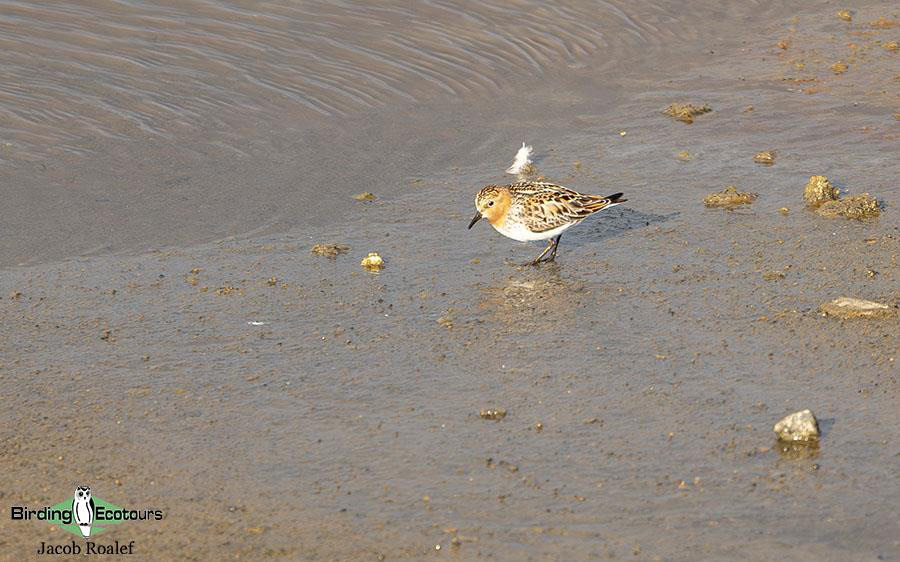
We enjoyed views of this glowing Red-necked Stint, a rarity for the ABA region.
Overview
This five-day extension tour of Utqiagvik (formerly Barrow) immediately followed our main 13-day Alaska tour, and began on the 24th of June in Anchorage. Three participants from the main trip and the guide met up with three new birders joining the extension, which finished on the 28th of June back in Anchorage. The tour explored all that the town had to offer, with birding around town, investigating the tundra, and scanning the Arctic Ocean. We visited Point Barrow, the northernmost point of the United States, and we were in town for a big festival held by the native people, which everyone was invited to. This tour had a little of everything.
While the species count is not high on this particular extension, the quality is top tier, featuring some incredibly difficult world birds. These are true northern Arctic breeding species, and we managed to find great success with our efforts. Our list on this short extension included Spectacled, Steller’s, and King Eiders, Black Guillemot, Yellow-billed, Pacific, and Red-throated Loons, Pomarine, Long-tailed, and Parasitic Jaegers, Baird’s and White-rumped Sandpipers, Red-necked Stint, Red Phalarope, Snowy Owl, Sabine’s Gull, Snow Bunting and more.
A total of 45 bird species were seen, with zero being heard only species. Despite the birds being great, the top highlight of the trip may just have been a mammal sighting. It can be tough to top Polar Bear on any trip! Full bird and mammal checklists can be found at the end of the report.

Our Polar Bear sightings were the top highlights of the trip (photo Gene Muller)!
Detailed Report
Day 1, 24th June 2024. Welcome and flight to Utqiagvik
Around late-morning everyone met up inside Anchorage airport, where the new participants joined the previous ones, to create our new group. After we dropped our bags off and made it through security, we grabbed lunch and introduced ourselves. It was then an approximately two-hour flight north to Utqiagvik, the top of the world. We deplaned, got checked in at the hotel, and sorted out all of our luggage. After getting settled we had some time, so we walked around town to our dinner restaurant and did our first birding in the north. The neighborhoods were loaded with Snow Buntings and both Common and Arctic Redpolls. It seemed most yards had a tundra pool in it, along with a broken-down car or two. These pools hosted Pectoral and Semipalmated Sandpipers as well as Red-necked Phalarope. We did a quick scan of the Arctic Ocean after dinner but not much was happening, besides a distant flock of flyby Long-tailed Ducks. From here we walked to the grocery store to load up on food that would become breakfasts and lunches for the next few days, and then made it back to the hotel to rest up before our first full day of birding.
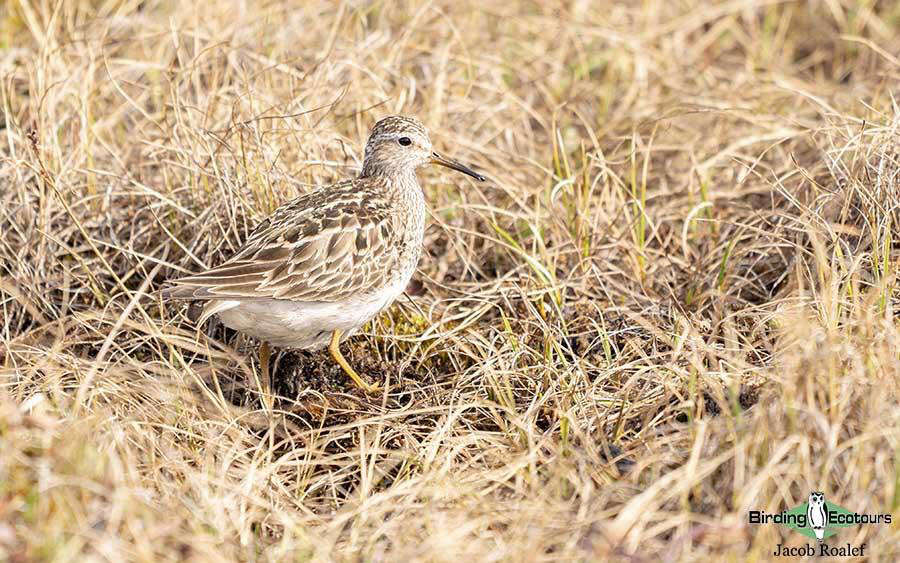
It was amazing to watch this Pectoral Sandpiper display in the tundra.
Day 2, 25th June 2024. Point Barrow and birding Utqiagvik
We began our day at the salt lagoons located on the outskirts of town. First, we walked through the neighborhood and noted a few calling Wilson’s Snipes, before finally getting eyes on one atop a telephone pole. Snow Buntings were seemingly everywhere around the houses and there was an occasional Lapland Longspur mixed in with them. As we approached the first salt lagoon, we noticed a good number of waterfowl on the water. We spotted Greater White-fronted Goose, Brant, Northern Pintail, and Long-tailed Duck. As we walked along the water, we stopped periodically and scanned. Towards the end we found a female Spectacled Eider mixed in with the Long-tailed Ducks. This was a fantastic start to our morning. We got to the end of the road and noticed a group of birders at the next lagoon, so we ventured over to them. They were already on some fantastic birds, and it wasn’t long until we were as well. Top highlights here included a lovely male Steller’s Eider and a bright, Red-necked Stint working the water edges. Other species included Black Scoter, Greater Scaup, Tundra Swan, Ruddy Turnstone, and Red Phalarope.
After this we headed back to the hotel for breakfast. Around 10am we were picked up from the hotel by our local guide and driver for a two-hour tour of Point Barrow. This sandy beach is only accessible with very special vehicles and by locals who are able to navigate the soft terrain. As we approached the northern-most point of the U.S., we took in some fantastic views of the Arctic Ocean and the ice shelf. Once at the point we were able to hop out for some photos and to do some scanning of the ice. Louis spotted a way distant Polar Bear and there was some extreme excitement as we worked on getting everyone to see this incredible animal! Of course, we searched for birds as well. They were a bit sparse out here, but we did spot a Sabine’s Gull and a small flock of Snow Geese on the way back in. Our guide dropped us back at the hotel, where we took a break for lunch.
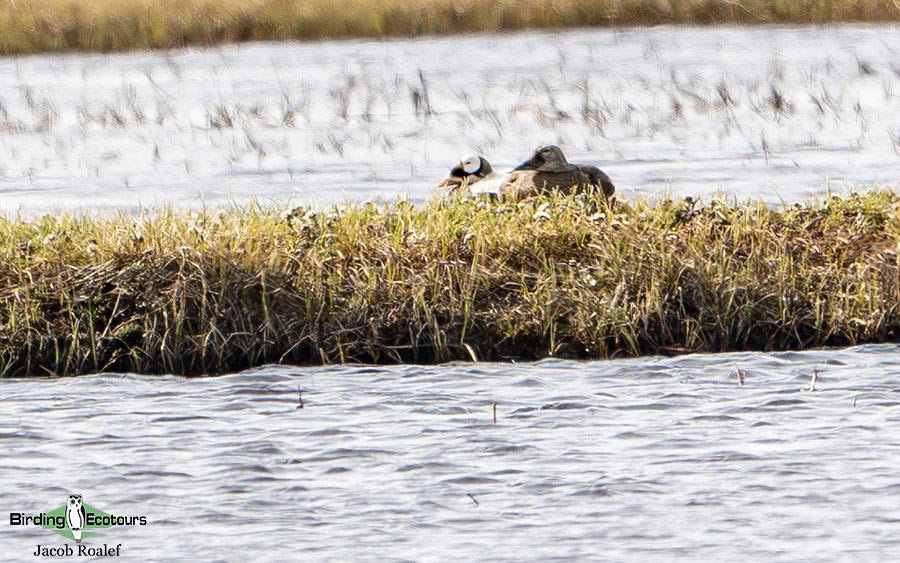
This pair of Spectacled Eiders were enjoying an afternoon rest.
We spent the afternoon exploring some of the outskirts of town. First up was Gas Well Road. We cruised along and it wasn’t long before an interesting white shape was spotted out in the tundra. We hopped out, set up some scopes, and sure enough, a Snowy Owl was watching over its domain. From here we hiked along a side road which allowed us to get more into the tundra habitat. We came across a small group of jaegers and to our pleasant surprise, all three species were in the group: Long-tailed, Parasitic, and Pomarine Jaegers. This allowed us to do some comparison and study of these tricky-to-ID species. Besides these birds, there didn’t seem to be much action, so we loaded up and headed for Freshwater Lake. Again, we ran into our friends, the other birders, and again, they had some nice luck. We jumped out and got onto two pairs of Spectacled Eiders hunkered down in the tundra grasses. It was great to see a male after our female sighting this morning. On the big lake was a drake King Eider, but not for long as, unfortunately, a Pacific Loon came flying in and scared the eider off. We stuck around a little longer with hopes for its return but, alas, no such luck to be had. However, we did pick up a few other nice shorebirds like Western Sandpiper and Dunlin, plus two more Snowy Owls. Just before dinner we did a brief scan of the water and found a few spouts of Grey Whales way out towards the horizon. It was then time for some dinner, another stop at the grocery store, and back to the hotel to end the day.
Day 3, 26th June 2024. Point Barrow take two, seawatch, and more tundra birding
This morning, we headed out to the end of Nunavaaq Street to conduct a morning seawatch and see what we could find out on the Arctic Ocean. It was a great start as we tallied over 20 Yellow-billed Loons right away! In addition to the fantastic Yellow-billed, we noted both Red-throated and Pacific Loons, Sabine’s and Glaucous Gulls, Black-legged Kittiwake, Red-breasted Merganser, Long-tailed Duck, American Golden Plover, Long-billed Dowitcher, and more. What a fantastic start to the day and really by now we had nailed all of the specialty species in the far north of Utqiagvik. We decided to head back to Point Barrow and try our luck with bears again. This time, as we approached the whale carcass at the point, we spotted at least four Polar Bears on land, much closer this time! We raced to get into position as the bears were scared off and sprinted out onto the ice. In total we counted seven animals, incredible!
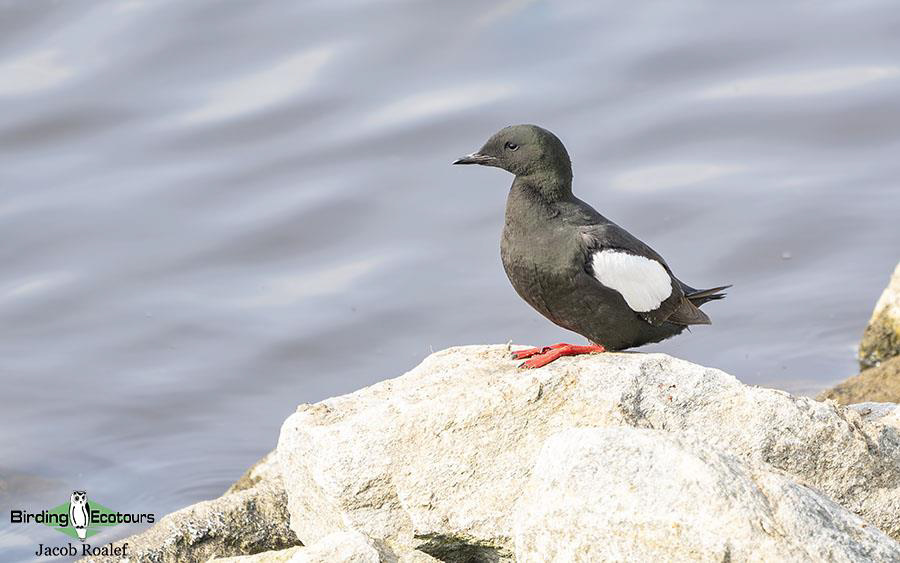
Black Guillemot occasionally nests along the rocky walls here.
After this amazing encounter with Polar Bears, we headed back to the salt lagoons for a mid-day scan. There were a lot of the same species as last time, such as Red-necked Stint (this time two of them), Black Scoter, Tundra Swan, and Semipalmated Sandpiper. However, we did pick up some notable new trip birds like Baird’s and White-rumped Sandpipers and a pair of Black Guillemots nesting on the rocks below. From here we took a break before dinner. After we ate, we decided to walk back to the hotel along a large pool in town where we picked up a Semipalmated Plover, new for the trip. It was time to call it quits after a fantastic day three.
Day 4, 27th June 2024. Final morning birding and flight back to Anchorage
On our final morning in Utqiagvik we headed back to the salt lagoons one final time to see if we could turn up any rare species. We had pretty much cleaned up on regularly occurring species for the trip, so we were hoping for anything new but were happy to just look one last time. Despite our best efforts to turn a peep into something else, we finished up with much of the same with Red Phalarope, Red-necked Stint, Black Guillemot, Northern Pintail, Brant, and more. From here we headed back to Freshwater Lake for one more check. Unfortunately, this was just like the salt lagoons, nothing new. We took in some final looks at Pomarine Jaeger, American Golden Plover, Dunlin, and Pectoral Sandpiper before heading back to town for lunch. After lunch, we had a few hours left so some of us used the time to rest while the rest of us went to the Utqiagvik Heritage Center to learn more about the history and culture of this fascinating place. There was even enough time for some of us to check out the big festival celebration that the natives were having in town today. Eventually, it came time to meet back up, board our flight, and get back to Anchorage. Once on the ground we collected luggage, ate a final dinner, and caught a shuttle to the hotel.
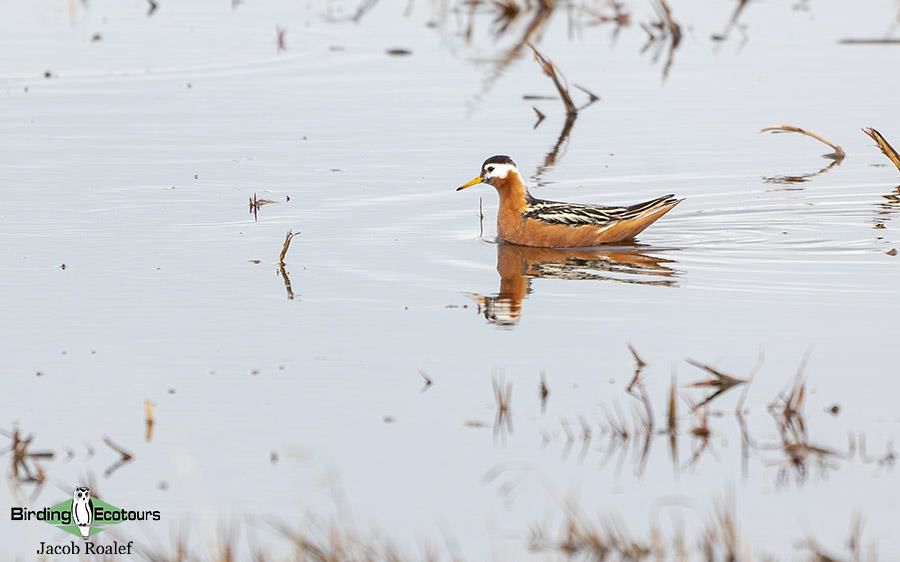
This Red Phalarope enjoyed spinning in the tundra pools.
Day 5, 28th June 2024. Departure from Anchorage
Today everyone could have breakfast at the hotel and either take the shuttle to the airport or continue on their own Alaska adventure. The extension was complete, and it was certainly a memorable one.
Bird List – Following IOC (14.1 – December 2023 version)
All below listed species were seen.
The following notation after species names is used to show conservation status following BirdLife International: VU = Vulnerable.
| Common Name | Scientific Name |
| Ducks, Geese, Swans (Anatidae) | |
| Brant Goose | Branta bernicla |
| Snow Goose | Anser caerulescens |
| Greater White-fronted Goose | Anser albifrons |
| Tundra Swan | Cygnus columbianus |
| Northern Pintail | Anas acuta |
| Greater Scaup | Aythya marila |
| Steller’s Eider – VU | Polysticta stelleri |
| Spectacled Eider | Somateria fischeri |
| King Eider | Somateria spectabilis |
| Common Eider | Somateria mollissima |
| Black Scoter | Melanitta americana |
| Long-tailed Duck – VU | Clangula hyemalis |
| Red-breasted Merganser | Mergus serrator |
| Plovers (Charadriidae) | |
| American Golden Plover | Pluvialis dominica |
| Semipalmated Plover | Charadrius semipalmatus |
| Sandpipers, Snipes (Scolopacidae) | |
| Ruddy Turnstone | Arenaria interpres |
| Red-necked Stint | Calidris ruficollis |
| Dunlin | Calidris alpina |
| Baird’s Sandpiper | Calidris bairdii |
| White-rumped Sandpiper | Calidris fuscicollis |
| Pectoral Sandpiper | Calidris melanotos |
| Semipalmated Sandpiper | Calidris pusilla |
| Western Sandpiper | Calidris mauri |
| Long-billed Dowitcher | Limnodromus scolopaceus |
| Wilson’s Snipe | Gallinago delicata |
| Red-necked Phalarope | Phalaropus lobatus |
| Red Phalarope | Phalaropus fulicarius |
| Gulls, Terns, Skimmers (Laridae) | |
| Black-legged Kittiwake – VU | Rissa tridactyla |
| Sabine’s Gull | Xema sabini |
| Glaucous Gull | Larus hyperboreus |
| Arctic Tern | Sterna paradisaea |
| Skuas (Stercorariidae) | |
| Pomarine Jaeger | Stercorarius pomarinus |
| Parasitic Jaeger | Stercorarius parasiticus |
| Long-tailed Jaeger | Stercorarius longicaudus |
| Auks (Alcidae) | |
| Black Guillemot | Cepphus grylle |
| Loons (Gaviidae) | |
| Red-throated Loon | Gavia stellata |
| Pacific Loon | Gavia pacifica |
| Yellow-billed Loon | Gavia adamsii |
| Owls (Strigidae) | |
| Snowy Owl – VU | Bubo scandiacus |
| Crows, Jays, and Magpies (Corvidae) | |
| Northern Raven | Corvus corax |
| Finches, Euphonias, and Allies (Fringillidae) | |
| Common Redpoll | Acanthis flammea |
| Arctic Redpoll | Acanthis hornemanni |
| Longspurs and Snow Buntings (Calcariidae) | |
| Lapland Longspur | Calcarius lapponicus |
| Snow Bunting | Plectrophenax nivalis |
| New World Sparrows (Passerellidae) | |
| Savannah Sparrow | Passerculus sandwichensis |
| Total seen | 45 |
Mammal List
| Common Name | Scientific Name |
| Bears (Ursidae) | |
| Polar Bear | Ursus maritimus |
| Earless Seals (Phocidae) | |
| Spotted Seal | Phoca largha |
| Grey Whale (Eschrichtiidae) | |
| Grey Whale | Eschrichtius robustus |
| Total seen | 3 |
DOWNLOAD TRIP REPORT
This is a sample trip report. Please email us ([email protected]) for more trip reports from this destination.
